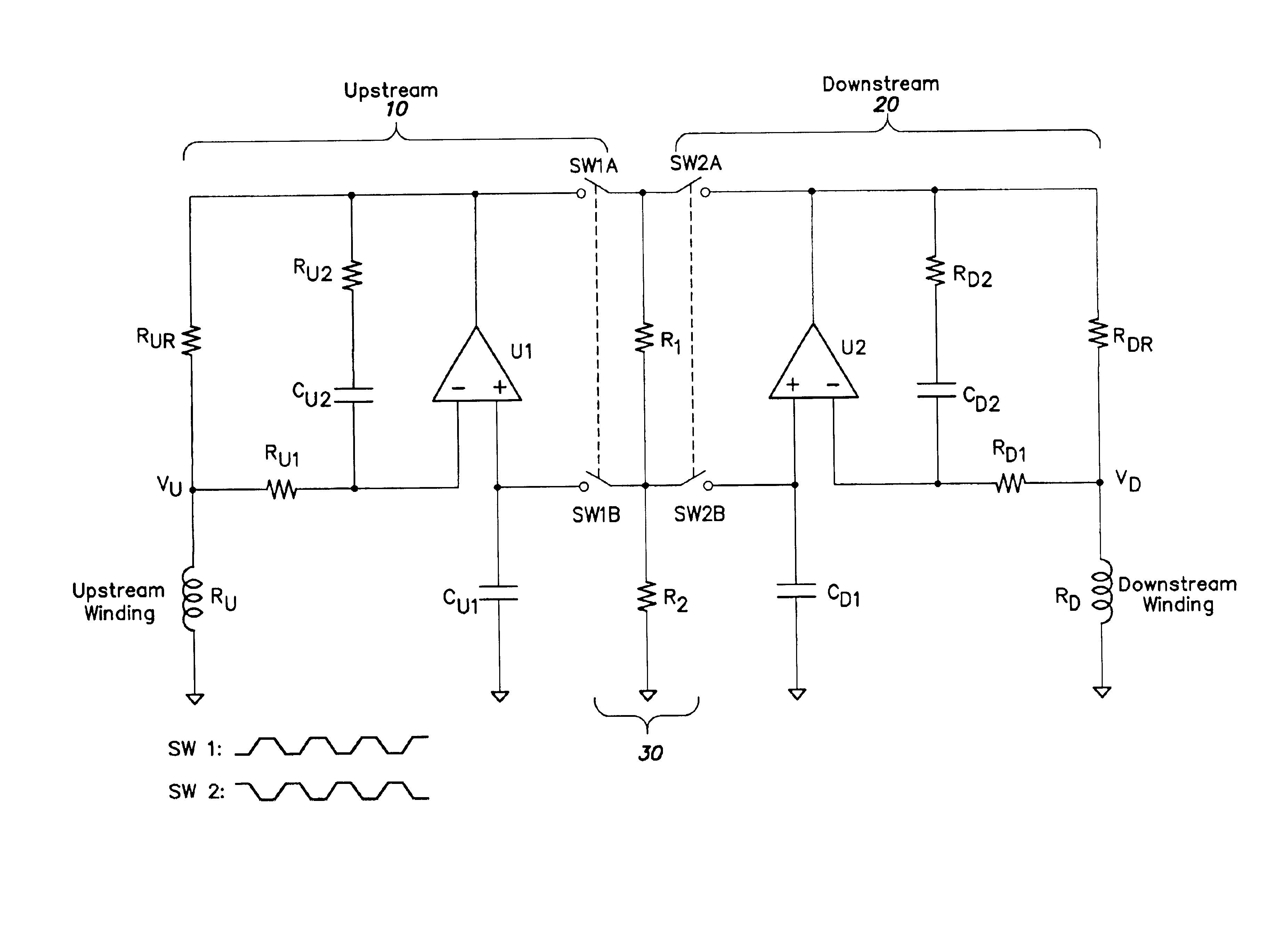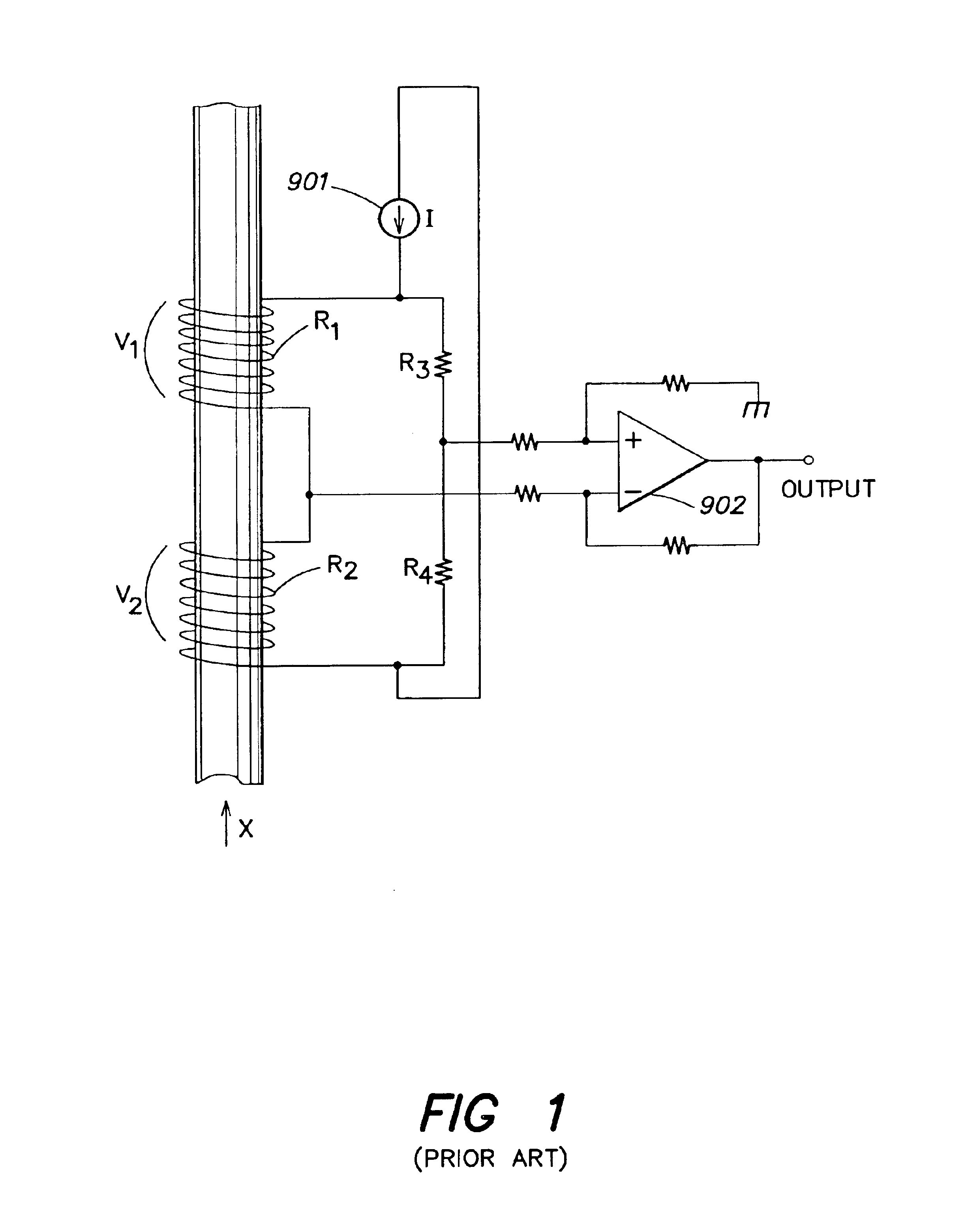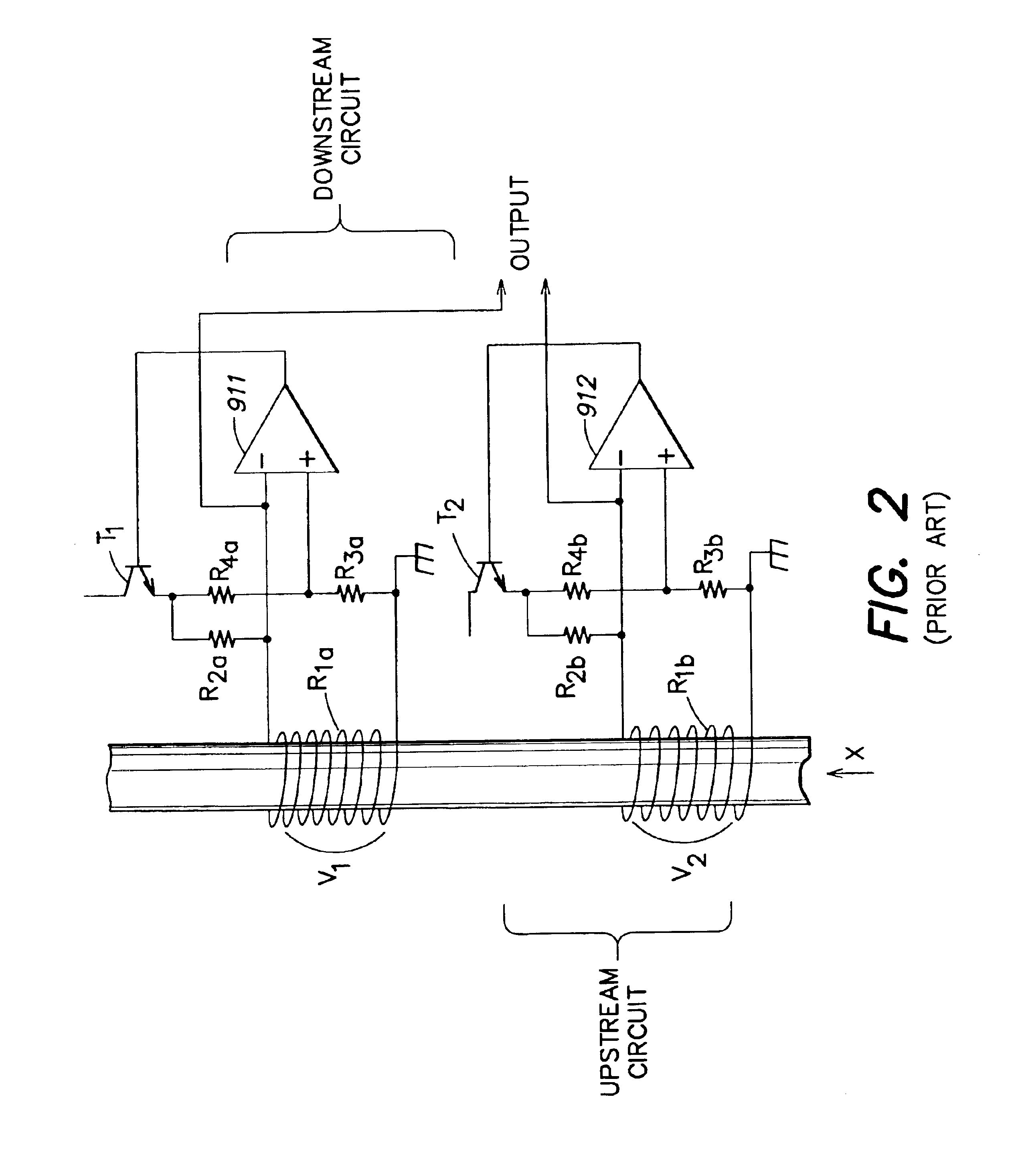Variable resistance sensor with common reference leg
a resistance sensor and variable technology, applied in the direction of resistance/reactance/impedence, liquid/fluent solid measurement, instruments, etc., can solve the problem of circuit losing its ability to discern differences in the flow rate of fluid, it takes a relatively long time for the temperature (and thus, the resistance) of the coil rsub, and the ambient temperature of the fluid flowing into the sensor conduit increases. , to achieve the effect of high flow condition
- Summary
- Abstract
- Description
- Claims
- Application Information
AI Technical Summary
Benefits of technology
Problems solved by technology
Method used
Image
Examples
Embodiment Construction
Embodiments of the present invention will be understood more completely through the following detailed description which should be read in conjunction with the attached drawings.
FIGS. 5, 6, 7 and 8 illustrate a number of different mass flow sensors according to various embodiments of the present invention. In each of FIGS. 5, 6, 7, and 8, the reference designator RU represents the upstream coil or resistor, and reference designator RD represents the downstream coil or resistor. As in the sensor circuits of the prior art, coils RU and RD are disposed at spaced apart positions about a sensor conduit (not shown) through which a fluid flows. As defined herein, the term fluid includes any material or combination of materials in a solid, liquid, or gaseous state.
Each of coils RU and RD has a large and substantially identical thermal coefficient of resistance, such that the resistance of each coils RU, RD varies with temperature. Although the upstream and downstream coils RU and RD are ref...
PUM
 Login to View More
Login to View More Abstract
Description
Claims
Application Information
 Login to View More
Login to View More - R&D
- Intellectual Property
- Life Sciences
- Materials
- Tech Scout
- Unparalleled Data Quality
- Higher Quality Content
- 60% Fewer Hallucinations
Browse by: Latest US Patents, China's latest patents, Technical Efficacy Thesaurus, Application Domain, Technology Topic, Popular Technical Reports.
© 2025 PatSnap. All rights reserved.Legal|Privacy policy|Modern Slavery Act Transparency Statement|Sitemap|About US| Contact US: help@patsnap.com



